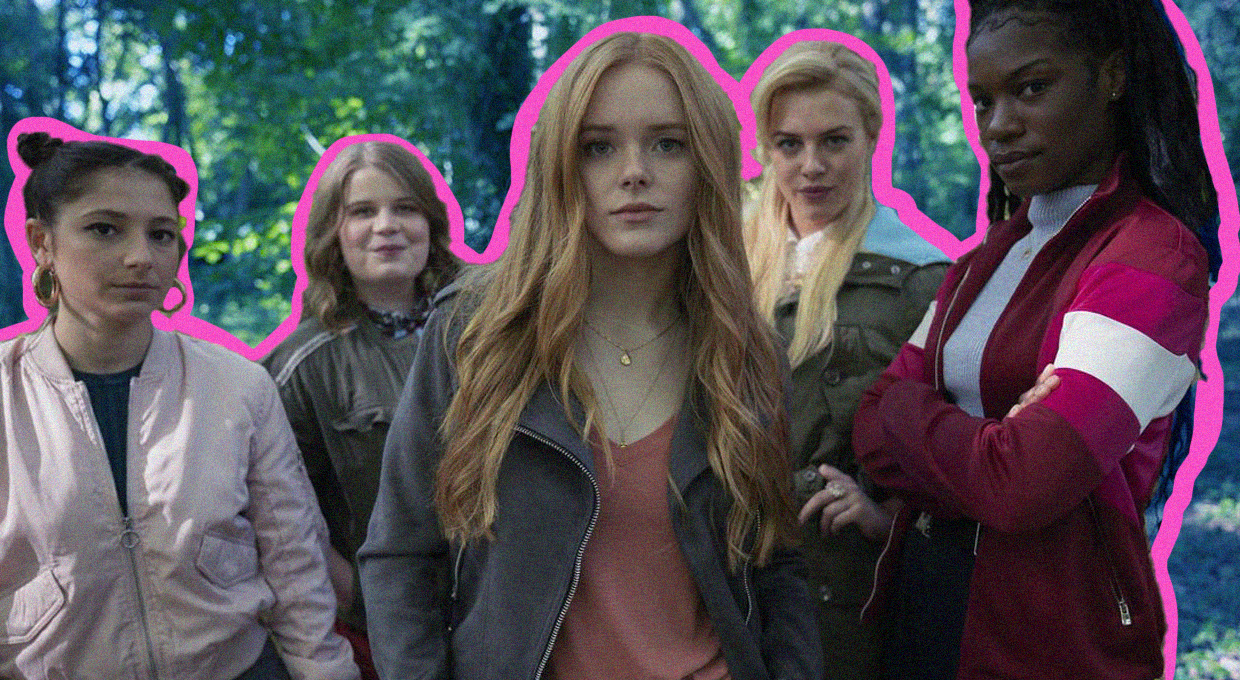With a mere six-episode season, Fate: The Winx Saga—a teen adaptation of Nickelodeon’s hit Winx Club series—already lacked the space to do much with the vast world it inherited from its predecessor. While it uses the rich Winx world to its advantage, Fate tries to do too much with the little it has.
The magic behind Nickelodeon’s Winx Club laid in its fun characters, exploration of friendship, and the growth—both on a personal and magical level—the girls experienced over the course of the show. It had diverse characters, scheming villains, and taught us girls could be powerful, too.
At its heart, Fate stays true to its predecessor. But it also tries to do too much, struggling to strike a balance between its character and plot arcs.
Like the original Nickelodeon series, Fate follows Bloom, a girl living among humans who quickly discovers she’s a fairy. She’s soon taken to Alfea, an ancient school for fairies, by the boarding school’s head mistress and left to bunk with the show’s remaining protagonists: Stella, Terra, Musa, and Aisha. Here, fairies and specialists alike train with the knowledge they might, one day, fight the legendary Burned Ones.
While the cast is fairly diverse, Terra, a white character, replaces Flora, a character widely believed by fans of the original show to be Latinx. While Terra provides important representation for body diversity, especially given the unnaturally small waists the original characters had, that doesn’t make up for removing a character of colour from the cast.
With the exception of Terra, the rest of the Winx girls all appear in the original show. Even a couple of the love interests—like Riven and Sky—and the show’s antagonist, Beatrix, are characters plucked straight from Winx Club.
But the use of familiar characters isn’t enough to save Fate from the rushed and, at times, stagnant character arcs of the main girls.
Each of the Winx girls, with the exception of Terra, makes a sacrifice in the series finale: Stella defies her mother, Aisha breaks the headmistress’ rules, Bloom risks her life for others, and Musa faces her fear of experiencing another death.
However, the show rushes through its characters’ development to get to this point. Instead of letting their words and actions throughout the series speak for themselves, the show relies on Riverdale-style monologues in which its characters give up their thoughts and secrets too easily to be realistic.
The beauty of storytelling lies in its ability to give you pieces of a character slowly and over time. With five main protagonists, countless more side characters, and only six 50-minute episodes, trying to explore everyone at once was doomed from the start.
That said, the combination of Fate’s rich worldbuilding and the grey moralities of its characters was a strength.
Drawing on the rich, fun world of its original series, Fate explores the powers and politics of those living in the Otherworld, characterizing people not as fully good or evil, but as a mix of both.
Cliff hangers work to the show’s advantage as Bloom digs up more and more about the past. In her search to discover who she really is, she uncovers the boarding school’s dark secrets, which only leave the viewer craving more.
The closer we get to the finale, the harder it becomes to distinguish the good guys from the bad ones. Everything we know about the headmistress and her allies is turned on its head as secrets come to light about the previous headmistress, Rosalind.
As Bloom struggles to distinguish truth from lie, she makes mistakes and is largely to blame for the invasion of Burned Ones in the series finale.
Fate shows that good and evil aren’t always concretely separable. Despite its botched character arcs, the show’s ambiguous antagonistic characters add an unexpected layer of intrigue and depth to the series.
Overall, Fate stays true to the heart of its cartoon predecessor and tries hard to pull from the original series its fanbase first fell in love with. Any Winx lovers won’t be disappointed by the numerous references to the old show, especially the subtle ones, like Terra’s cousin Flora or Bloom’s fairy transformation—which was not nearly as cool as in the original.
Fate struggled to fit everything it wanted into six episodes, but the impressive worldbuilding and intrigue of Bloom’s past leave a world of potential in the show’s wake. Not to mention the wealth of characters from its original, just waiting to be used in future seasons.
Right now, Fate is the barebones of what could be Netflix’s next big hit—should the showrunners slow down next season and give the character’s the depth they deserve.
Tags
All final editorial decisions are made by the Editor(s)-in-Chief and/or the Managing Editor. Authors should not be contacted, targeted, or harassed under any circumstances. If you have any grievances with this article, please direct your comments to journal_editors@ams.queensu.ca.

